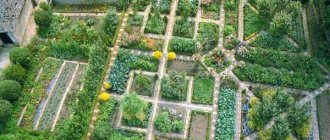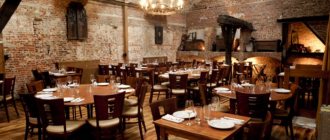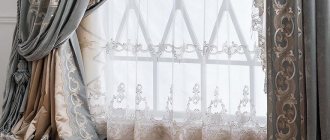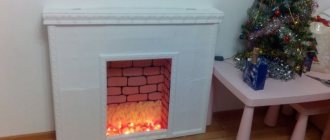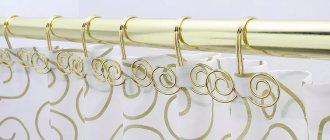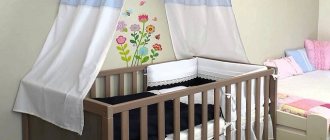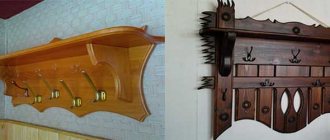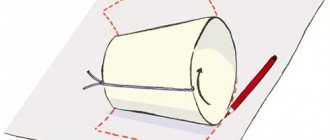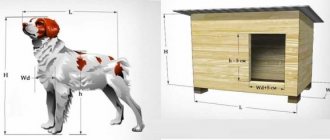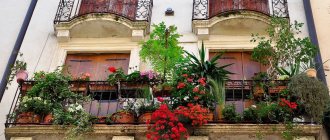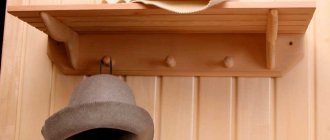Cafes and restaurants are premises whose main purpose is to organize a person’s complete rest from the hustle and bustle of life and the drab work days. That is why there are so many requirements for the design style of cafes and restaurants, the main one of which, of course, is originality with constant comfort.
A novice restaurateur or café owner, of course, needs to have a huge baggage of a wide variety of knowledge and skills, but we can confidently say that he needs to start with the basics. And the basis for the successful development of this type of business is the good mood of the visitor, which consists of many different factors, including how pleasant the design and interior of the cafe is for the beloved visitor, who will definitely come again if he is pleased!
What is interior design?
Color solutions and design styles, decorative elements with a specific theme, room decoration, lighting and furniture are unconditional elements of room design. Properly selected decorative elements, furniture, colors and a unified style when decorating a room are the key to its success. That is why competent design of cafes and restaurants is the main task that arises immediately after the idea of starting this particular business!
The importance of restaurant entrance design
To attract customers, the way the entrance to the restaurant is decorated is of great importance. It is very important to take care of a beautiful entrance door that is in harmony with other elements and the interior.
The design of the entrance to the restaurant must necessarily correspond to the entire style of the establishment. If the entrance looks bright and intriguing, then a passerby running past may look in for the first time out of curiosity. Those visitors who are heading to the restaurant purposefully will be able to see such an entrance from afar. Therefore, any element can be used in a complex design or separately.
We design entrances to restaurants. Our experts will offer you attractive options that will make the entrance to your establishment especially memorable.
Cafe interior styles
Organizing your own business should start with an idea! Inspired by an idea, the owner of a future cafe or restaurant clearly sees it in his imagination down to the smallest detail. Designers, observing the requirements of the entrepreneur and putting a piece of their soul into their work, are able to create a room to which people will return again and again not only to drink coffee and eat, but also to plunge into the unique atmosphere of this particular establishment.
When planning a particular room for restaurants or cafes, it is important to work with the sensations and sense of inner comfort from all the well-thought-out details in the interior. That is why, when creating a design, it is impossible to choose and strictly adhere to a specific style. So, for example, when planning a pizzeria, the Italian style is taken as the basis for the design. When decorating a room in a bar or cafe, the lion's share of attention is paid to the design of the bar counter. But with any planning, uniformity of design solutions is impossible, which is why the emphasis is on individuality.
The design of cafes and restaurants and the variety of various solutions for decorating halls are simply amazing! Decoration in the style of a particular national culture or thematic design, for example: a hunting restaurant, a sports bar, a restaurant in a nautical style, or a children's cafe - is subject to a specific idea, but is embodied in completely different design solutions.
For example, let’s look at the main directions of design styles, in which everything is limited only by the designer’s flight of fancy and is subordinated to one idea.
- The classic style in design is rigor and naturalness, and at the same time maximum simplicity and comfort from every detail in the design.
- The Rococo style or decoration in the style of a “dear” client is distinguished by expensive items and refined and strict design.
- Art Deco style - implies elegant and light decor.
- Art Nouveau style is a style in which light and sinuous lines are present in the design as the main idea of this room.
- Natural furniture style is characterized by products made from natural wood and other natural materials.
- Seaside restaurants speak for themselves, and the main idea behind the design of such premises is the Mediterranean style.
- Minimalism is a style of simple color schemes with ideal proportions that are suitable for fast food restaurants and inexpensive cafes.
- Chrome-plated pipes, furniture made of natural wood, extravagant forms of furniture embody the high-tech style with maximum comfort.
- English style is a style in which the best cultural traditions of this country are found in the form of really expensive and high-quality interior details, which include not only furniture, but also color schemes.
- The exotic and alluring style of the eastern culture of Japanese, Moroccan and Chinese restaurants is expressed in the form of various thematic trinkets, certain traditions in clothing and, of course, cooking that is unique to this culture.
Choosing a cafe style
Stylistic diversity opens up space for imagination. Decoration is perhaps the most pleasant and at the same time time-consuming stage before the official opening of your own establishment. The design will include a “tasty” interior and an alluring exterior. The interior decoration consists of the layout of individual rooms and zones, decoration, lighting, color scheme and decor, which polishes the style. First, you need to determine what category of people your establishment will be designed for. Cafes are classified into the following types:
- Coffee house. Making an invigorating drink is a priority.
- Small cafe. It offers a “full” menu, but the dimensions of the premises do not allow for a large flow of visitors.
- Luxury cafe. Such establishments almost reach the level of restaurants and receive mainly elite visitors.
- A pub. An establishment with night opening hours, where guests can have a glass or two.
- Cafeteria. The restaurant's menu is the same as in a cafe, but it operates on the principle of self-service.
- Budget fast food. A very popular option for serving “junk” food. The name “fast food” replaced the domestic buffet.
- Cafe with healthy food. Designed only for a certain category of people. The location of such cafes near sports complexes is relevant.
- Sports bar. It hosts live football and hockey broadcasts every day. Alcoholic drinks are offered to guests.
- Art cafe. A youth institution that welcomes creative individuals, where they can discuss issues of art.
- Dining room. A spacious cafe that receives a large flow of visitors every day. Usually located near large enterprises, office centers, banks. On weekends, celebrations are often organized here: banquets, weddings, anniversaries.
- Lobby bar. The establishment is located in the lobbies of hotels and inns. Intended for visitors and tourists. The cuisine is usually multinational.
Recently, more and more multifunctional cafes have been opening, which are more like small restaurants. Among the variety of styles, the following interior solutions can be noted:
- Loft or noble industrial. The style is now experiencing a real “boom”. Its calling card - brick walls are used in half of the fashionable interiors of houses and public institutions.
- Retro. The trend is relevant in narrow circles of connoisseurs of antiquity. Usually they reproduce the atmosphere of American jazz clubs, which were visited by ladies in fur coats and gentlemen in ties. Such cafes attract a bohemian audience who can plunge headlong into a new world of luxury and elegance.
- Russian. In this style, the main room is styled as a tavern with massive wooden furniture and a horseshoe over the entrance (for luck, as the saying goes).
- Fusion The direction is a stylistic potpourri. Fusion is classified as a more modern eclecticism. The style allows you to decorate the cafe in an unusual but cozy way. A complex interior solution will attract visitors from the “informal” category.
- Country. Rustic style that is characterized by simplicity. It allows the owner to save on finishing, but at the same time decorate the room in an original way.
- Provence. The classics of the French countryside are characterized by lightness and grace. For decoration, old furniture is used, which will look appropriate and organic in such an interior.
- Chalet. The direction arose on the Alpine slopes. It uses wood and natural materials. The facade is decorated with panoramic windows, and a fireplace will be a special sign of comfort.
- Eco style. Modern man is drawn to everything natural, which is why the interior emphasizes closeness to nature. For example, the central hall can be decorated with wooden logs instead of chairs, and compositions made of branches will act as the main decor on the walls.
- Disco style. Suitable for those who are nostalgic for the crazy 80s. The decor of the cafe will be flashy and provocative, using bright colors and posters of musical groups that were popular in those distant times.
- Empire style The direction is graceful. Floral ornaments and floral patterns are used in decoration. The furniture is neat on twisted legs, decorated with handmade carvings. The room is decorated with stucco.
- Modern. The style is characterized by lightness and unobtrusiveness. The interior is dominated by pastel colors and natural materials. The direction has taken an intermediate position between luxurious classics and laconic modern styles.
Separately, it is worth noting the ethnic style. By styling a cafe after a specific country with national cuisine, the owner will kill two birds with one stone:
- It will attract people from this state who miss their homeland to the establishment.
- It will lure locals who want to taste the exotic.
We often open cafes in ethnic style of two types:
- With interiors and cuisine from neighboring countries: Uzbek restaurants with traditional Tashkent pilaf, cafes with nostalgia for Armenia, or Ukrainian “huts” serving rich borscht and dumplings.
- Stylized as an establishment in exotic countries for domestic visitors. This includes Greek, Italian, American, and Mexican cafes.
Let us dwell on some styles, a detailed description of which will explain the reason for their popularity in the interiors of modern cafes.
In ethnic establishments, it is desirable that the staff speak the language of the country in whose style the interior is decorated. If you comply, then in everything.
Classic
Wood will prevail in classic decoration. It is used both for decoration and furniture. However, these are not rough country wood surfaces, but finely and carefully processed elements. Textiles use natural, “heavy” fabrics with delicate, elegant patterns. The classic style is not suitable for small rooms (less than 15-20 sq.m.). The problem is that in limited spaces it is difficult to implement it without losing some of the charm and luxury. Classic decor is very restrained; the style does not accept an abundance of small details that threaten to turn the interior into bad taste. The ceiling and walls are decorated with stucco; the entrance can be supplemented with an arched vault supported by columns. The main door is painted noble white and decorated with a gold handle and carvings. The color palette is dominated by brown, chocolate, olive, and golden. Crystal is also used in decoration: glasses, figurines, chandeliers. Classic style is more suitable for the interior of a restaurant.
The design uses simple geometry. It is unacceptable to overload a classic space with complex configurations.
Modern style
Modern interiors strive for laconism and simplicity. It cannot be said that this style has completely abandoned luxury, but it has become less flashy and more restrained. The direction was created in opposition to traditions. The interior colors are dominated by gray, white, black and accent bright touches: blue, cyan, violet. The classic embossed ones have been replaced by perfectly smooth surfaces. The preferred materials are metal, plastic, natural stone and brick. The room is decorated with marble tables, soft poufs and “pears” in the center of the room, stylish lamps of unusual shapes, and bright tableware. You shouldn’t forget about catchy shades, as they will help dilute the overall “sterility” of the atmosphere and bring coziness. Also, the room must be decorated with numerous lamps, sconces, and ceiling chandeliers. Lighting is developed on three levels, and special attention is paid to point light sources that highlight the advantageous aspects of the interior.
Minimalism
Minimalism is characterized by simplicity in design and an almost complete absence of decorative elements. A guest from the east came to us a couple of decades ago and has established himself in interior design for what seems like many years. Style loves freedom, large spaces, which seem even more spacious due to the light. However, so that the room does not create the impression of a continuous canvas, it must be zoned. It is relevant to use screens or decorative partitions between tables. Visitors will have the opportunity to delimit their personal space and at the same time remain part of the common room. In the color palette, primacy is given to white. The color of purity is emphasized with grey, black, blue, yellow. Stone, brick, wood, and plaster are used for decoration. The surfaces of the materials are deliberately not processed in order to emphasize their naturalness. The style is also characterized by an abundance of glass, in which rare decorative elements are made. Minimalism adheres to simple lines and shapes, excluding any “geometric” experiments.
Marine theme
Marine style is considered a favorite option for interior design in country houses on the beaches. Cafes, which are usually scattered along the embankment at the service of vacationers, also give preference to this particular direction. In cities where they only dream of the south before a vacation, an establishment decorated in a maritime style will evoke pleasant nostalgia and help you truly relax, as if you were on a good vacation. The palette of shades uses a “quartet” of tones: green, blue, indigo and white. The brown colors of the wood of the deck boards and steering wheels join their strong company. Furniture upholstery and textiles traditionally feature sailor stripes. In the decor you can use anchors and ships in bottles, telescopes, navigation devices, sails, lifebuoys, and tackle falling from the ceiling. An original solution would be to design the doorway in the shape of a steering wheel, the “spokes” of which will diverge to the sides along the walls. The windows are made small, like on ships. One of the accent walls is covered with photo wallpaper depicting an old world map or a treasure island. The design is printed on a “sheet” with charred edges on paper that has become “yellowed” with time. Some restaurateurs go further and embody the pirate theme in certain areas of the cafe. For example, the VIP room is decorated with massive chests with artificial gold, cages with live parrots and old lanterns as lampshades.
East style
Cafes in oriental style look unusual and fascinating. In interior design, it is imperative to develop soft, diffused lighting that gives a warm light. The floor is covered with tiles with ornate patterns. Complex patterns are one of the main features of the style, which is used on almost all surfaces. The tiles are partially covered with soft rugs. The seating areas are low and always decorated with numerous pillows. In oriental cafes, as a rule, guests are offered to smoke a hookah. It is more convenient to do this in separate rooms, which are separated from the common room by translucent curtains. Doorways are decorated with arches with characteristic vaults that have a sharp, elongated tip exactly in the middle. The room is decorated with a large number of round lamps that hang from the ceiling at different levels. In the color scheme, preference is given to shades of red, brown, and blue.
Italian style
The Italian style has retained many of the features of Baroque, which at one time gained wild popularity in this country. The palette of shades is dominated by brown, olive, terracotta, cream, orange, yellow, and brick. The finishing uses a combination of relief plaster, raw stone and solid wood. Moreover, noble varieties of the latter are chosen to emphasize the light luxury of the interior. The interior design uses massive, low furniture, which is decorated with upholstery with floral patterns. Alternatively, you can choose lightweight wicker chairs instead of stools. Collages of photographs are hung on the walls. Untreated ceiling beams and supports, which will also serve as conventional boundaries of combined zones, can become an important decorative element. Textiles chosen are richly decorated with patterns. Tables are usually covered with checkered tablecloths. The decor uses indoor plants, wicker elements, and wine bottles, which are taken outside the bar.
Japanese style
Japanese style is an integral part of the oriental one. He has retained its main features, but he himself is not devoid of individuality. Interior design in accordance with the canons of this trend is relevant for sushi bars and cafes with cuisine of the same name. Light-colored wood is used for decoration. The walls and ceiling are decorated with panels, which are used everywhere in the land of the rising sun. Seats for guests are decorated with low tables and mats or chairs without legs. The establishment is decorated with luxurious imitations of vases from the Ming era, panels depicting cherry blossoms, voluminous lanterns, and a path of flat stones right on the floor. The interior is decorated in neutral colors: white, black, brown, gray. The windows are covered with panel curtains made of silk, cotton, and linen. There must be live plants in the room.
Rococo
Rococo will be a good option for those with a fine artistic taste. In the room, the corners are slightly smoothed, as the style prefers smooth lines. The presence of high ceilings is one of the features of Rococo. The walls are decorated with expensive fabric wallpaper with the finest patterns. Light wood, ceramic tiles and marble are also used for cladding. In Rococo, a large amount of stucco is used, which is covered with gilding on top. The windows are covered with heavy curtains made of natural fabrics with the same floral pattern. The central element of the decor will be a huge crystal chandelier with light bulbs installed like candles. The prevailing shades are white, brown, wine, turquoise, blue, and pink.
High tech
High-tech interiors are modern and cozy, but it will be difficult for those who are all for tradition to stay in them. For this reason, the high-tech direction will give comfort mainly to the younger generation. This nuance should be taken into account when developing the concept of the establishment. Plastic, chrome and glass surfaces, untreated brick and stone are used in the decoration of walls and ceilings. The lighting is multi-level, neon-cold. It is better to lay the floor with a self-leveling floor with a glossy sheen. The furniture used is simple, with strict line geometry. The main shades are grey, white and black. The trinity can be supplemented with lilac, blue, red, cyan, yellow, that is, any color that is emphasized with appropriate lighting. The windows are panoramic. They are curtained with stylish blinds. Art objects in the style of cubism, constructivism, and futurism can serve as decor. They dilute the cold, technological atmosphere with indoor plants in square or triangular pots.
Children's Cafe
Some cafes create a separate children's area where parents can send their children and relax in peace. However, recently entire establishments that are designed only for children have been gaining popularity, a kind of culinary Disneyland for little ones. The central hall is usually divided into three zones:
- Common for all children;
- Boys' area. A recreation area for young pirates, robbers, astronomers, machinists and roboticists;
- A playground for girls where young princesses will find entertainment to their liking.
Any children's cafe should focus not on healthy but tasteless food (as most of us believed in childhood), but on confectionery and ice cream. Typically, children are taken to such establishments for special occasions, so the restaurateur should provide for the presence of a mini-banquet hall. Children's cafes are designed based on fairy tales, with bright decorations on the walls and similar decor. Sometimes they provide presenters with entertainment programs that will make the children’s holiday more vivid and memorable.
The restaurateur should also arrange a relaxation area for parents, that is, those adults who will come to look after the young company. The area should be separate so that children are not disturbed, but with a good view.
Summer cafe
A summer cafe can be of two types:
- A separate establishment that operates exclusively during the warm season and closes when cold weather sets in.
- A food court, which is attached to the main establishment and offers guests the choice of an additional area for relaxation.
As a rule, the summer zone is moved either to the backyard of the establishment, or directly in front of the facade and storefront. The terrace is equipped with light furniture. Be sure to have an awning on the roof, which will protect you from accidental rain. The summer cafe is decorated with potted indoor plants, dwarf trees, and curtains in improvised “windows” that help protect from the wind and scorching sun.
Hookah bar
The design of the hookah bar can be either modern or according to the canons of the classic oriental style. In the first case, smooth surfaces are used in the decoration, furniture of strict shapes, an abundance of white, and neon lighting. In the oriental style, tiles and textiles with a large number of subtle patterns are used. The main thing that should be provided in such an establishment is the presence of separate areas where guests can safely smoke a hookah. In some cafes, this service is included in the list of additional ones and for visitors who want to smoke a couple of smoky rings, they create separate places outside the common room.
Karaoke room
Karaoke cafes are considered more of a nightlife establishment. Of course, serious people can come here solely for the purpose of “stretching” their vocal cords, but much more often the stage is taken over by guests liberated by alcohol. A large number of the latter occur on Friday and Saturday evenings. There will be a rush at the karaoke bar ahead of the weekend. There are no strict restrictions on the type of interior design in an establishment. For example, a restaurateur can successfully embody country or Italian style in decoration. However, the common hall must be designed in such a way that visitors can easily observe the stage from any point.
Beer pub
The interior of a beer bar should be conducive to easy communication and relaxation. The atmosphere in establishments is often maintained as relaxed, conducive to the emancipation of visitors. They are often installed in basements. A cafe bar can expand its audience and broadcast sports matches daily. It is recommended to use wood and brick in the interior of the establishment. Shades are chosen from the “natural” range, that is, from tones of brown. The natural atmosphere will encourage the consumption of light alcohol, which will increase revenue.
Types of cafes
There are typical cafes that people come to for a specific purpose. This is expressed in the desire not only to eat and drink, but also, for example, to think about life. There are also places where it is simply indecent to go without a date. Surprisingly, the design style and atmosphere make any cafe a meeting place for a certain type of people with certain needs.
- For example, a cafe in which you see a person reading a newspaper or drinking coffee for hours can easily be classified as a Viennese coffee shop.
- A cafe with an abundance of various pastries and sweet products can be classified as a bakery cafe, where people enjoy unique moments spent in the company of family over a cup of tea.
- Finished products are right here and ready to go – this is exactly the slogan of the buffets. Mostly, these types of cafes and catering establishments are located in working-class areas and contain a large number of tables and chairs.
- The predominance of a clearly Japanese theme in the interior design of the cafe characterizes the kissaten cafe. This cafe should not be confused with a sushi bar. Kissaten is decorated in Japanese style, but the menu contains dishes from a regular coffee shop.
- In a cafe where alcoholic drinks are completely excluded, and tea in any form predominates on the menu, you can say that you are in a teahouse cafe.
- The restaurant may have a summer terrace with tables or a small veranda, which is called a shanigarten - one of the types of modern cafes.
Color solutions in the interior of a cafe or restaurant
The color in which the interior design of the cafe is made is very important, as it affects the visitor in a certain way. It should be remembered that color creates a mood and certain feelings of mental comfort or discomfort in a particular room. What colors should I use?
- The unobtrusive red color in the interior of the room will increase the mood and appetite of the visitor.
- Along with red, orange will also perform the same function.
- Yellow color in the interior will calm and make the visitor think about the eternal.
- Along with these basic colors of mood and appetite, white, brown and green colors in interior design will harmoniously complement the overall picture.
Greek restaurant
The main colors in the interior of a Greek restaurant are white and pale blue. Wooden cabinets and doors, wicker furniture and lampshades will create the atmosphere of a resort town on the sea coast. White linen tablecloths on the tables and light light curtains on the windows will be a reference to Greek tunics.
The interior of the restaurant can be decorated with columns, statues and amphorae in antique style. In the center of the hall you can place a small fountain with ancient Greek motifs.
Place artificial flowers, olive branches, fruits, and bottles of olive oil on the shelves. The walls can be decorated with photographs of seascapes, pictures of Athens and Santorini.
Pay attention to the musical accompaniment - in the evenings, play traditional sirtaki, as well as modern Greek songs.
Stages of developing the interior design of a restaurant or cafe
The stages of developing a cafe project include:
- Drawing up technical specifications;
- Development of sketches;
- Drawing up a design project for the premises and working documentation, which includes: ceiling heights, measurement plans, location of lighting fixtures and furniture, and much more.
Children's cafe interior
With a competent approach to the design of a children's cafe, little visitors will not be able to pass by, and their loving parents will not be able to deny them this pleasure. In order for a business in the form of a children's cafe to increase not only profits, but also satisfied guests, the atmosphere of the premises should be brought to perfection and the following should be provided for:
- Bright colors in the interior;
- High-quality and believable drawings on the walls, for example, characters from your favorite cartoons.
- Living life-size dolls and the presence in the interior of artificial dolls and characters from the same fairy tales.
Basic principles of children's cafe design
Don’t think that the interior of a children’s cafe is just dolls and paintings on the walls. This is, of course, very important, but the fundamental principle in relation to choosing a place of entertainment for any parent is a place where his child will be completely safe and comfortable.
Important:
- The finishing material must be natural and of high quality.
- The interior should contain only safe and under no circumstances small toys.
- All communication wires and sockets must be completely isolated from the eyes of a curious child.
- Surfaces in a children's cafe should be easy to clean and wear-resistant.
- Furniture should not contain sharp corners.
- Competent and well-trained staff must be able to communicate with children.
Fast food cafe interior
In the interior of a fast food cafe, the main focus is minimalism and comfort. Such cafes are visited by almost all age categories of people. Such establishments include pizzerias or coffee shops, bistro cafes, as well as famous restaurants McDonalds and KFC. It is recommended to decorate a fast food cafe in warm colors and equip it with durable and simple furniture.
Cafe bar interior
A separate direction in design art is the design of a cafe-bar. When choosing a design for such an establishment, it is important to take into account the general principles and trends of the chosen design in combination with the wear resistance and durability of decorative elements.
Planning the design of a cafe bar begins with choosing a color scheme. Light colors and bright objects make the interior more noble and strict. Dark shades in design solutions are in demand in pubs and youth bars.
Furniture that must be present in cafe bars:
- High bar stools;
- Armchairs and sofas;
- Regular chairs.
The interior of a cafe-bar with a specific theme, for example an art cafe, usually fully corresponds to the chosen style and the rest of the premises, including restrooms and wardrobes, are decorated in accordance with it.
Loft style cafe
Lots of air and space are the basis of this concept, so for such a project it is better to find a large room with high ceilings. Bright locations with panoramic windows without curtains or curtains are perfect.
Mandatory elements of the interior of a loft-style cafe are industrial motifs: exposed brickwork, deliberately carelessly applied plaster, simple but comfortable furniture and a ventilation system installed directly under the ceiling of the hall, which is not hidden from view. All this, combined with brutal metal lamps and unusual decorations, creates a feeling of simplicity and freedom, which many lack in the noise of large cities.
The interior of a loft-style cafe will turn out to be modern and fashionable if you add brutal shelves with books and figurines, and massive furniture. A fireplace in a futuristic style can be a striking detail.
An undoubted advantage of decorating a restaurant in a loft style is that it is not tied to any cuisine in the world; you can serve your guests burgers and fries, or oysters on ice.
Restaurant interior
Modern restaurants always contain a couple of original features in their design. The restaurant, unlike a cafe, has huge halls and a large number of seats for visitors. A restaurant must attract a large number of customers in order to maintain and pay off the premises alone. That is why design solutions used in the interior of a restaurant must be distinguished by impeccable taste and beauty.
The originality of a restaurant, unlike a cafe, lies in its ability to create an atmosphere of chic, comfort and relaxation. Light colors, round tables and crisp white tablecloths combined with pleasant live music are what first comes to mind after mentioning the word restaurant.
In modern restaurants it is possible to zone the premises using colors and textures. Restaurants can combine various masterpieces of design art: paintings and flowerpots, decorative beams and much more, which will emphasize the true chic of the establishment and attract a huge number of regular visitors!
Creating an unforgettable atmosphere and bringing the quality of dishes and their presentation to perfection are the main tasks of any beginning restaurateur, which anyone can do if they wish.
Italian restaurant
Summer colors will help convey the atmosphere of sunny Italy. Choose beige, blue, olive and green shades - those that are associated with the sea, warmth, beach and blooming garden.
Choose simple but elegant wooden tables and decorate them with cotton tablecloths. Wicker lampshades will also fit perfectly into the interior of an Italian restaurant. Bottles of wine and olive oil in wicker baskets, paintings and photographs with views of Italy will give guests a feeling of comfort. Italian style implies a lot of living plants in the restaurant interior - these could be spray roses, hydrangeas, jasmine.
An open kitchen with a large wood-burning oven will show guests that you prepare pizza and lasagna responsibly and with care.
If the room allows, then the ideal solution would be a summer veranda with flowers and wicker furniture. You can also separate the tables from each other with trellises entwined with vines - visitors will be able to privacy, while always being surrounded by living plants.
